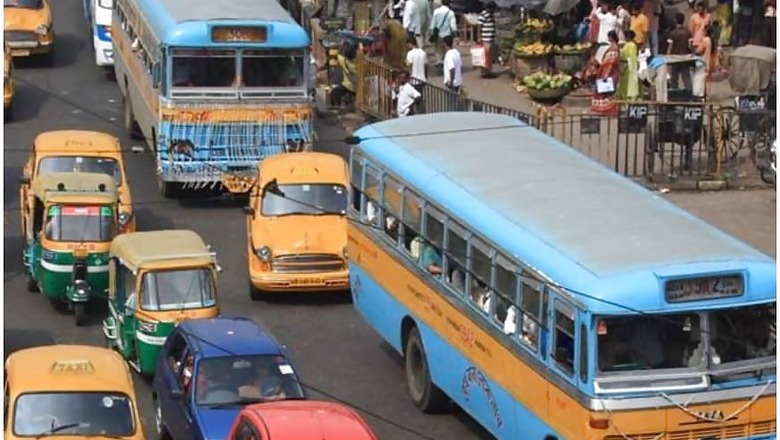
views
Kolkata: The 2016 World Health Organisation (WHO) report brands Kolkata as the country’s second-most polluted city after Delhi. What’s worse is that the city’s environmentalists are armed with data to show that the pollution level is spiking at an alarming pace each day.
Even two days after Diwali, the US Consulate Air Pollution Real-time Air Quality Index (AQI) in Kolkata was recorded at 192, which falls in the ‘unhealthy’ category. On Diwali, Kolkata’s AQI level stood at 420, same as Delhi’s. Mumbai’s AQI level on the same day was recorded at 361.
It’s intriguing to note that Kolkata shuffles between top five of the most polluted cities in India throughout the year despite having fewer vehicles and industries. The city also bursts fewer crackers during Diwali compared to Delhi.
Kolkata-based green crusader Naba Dutta said, “One of the causes behind Kolkata’s pollution is the rampant use of kerosene mixed automobile fuel/LPG by auto-rickshaw drivers. Additionally, the share of open spaces in the city has shrunk to an alarming seven per cent, the lowest among all metropolitan cities. Ideally, open spaces as per the density of population should be between 25-30 per cent.”
“Pitted against the number of vehicles that ply on the city, road space in Kolkata is less compared to Delhi and Chennai. Moreover, the Alipore and Beltala Public Vehicle Departments (PVD) alone have around 20,000 registered auto-rickshaws which ply on 123 routes across 144 wards in Kolkata. But the ground reality is there are a large number of unregistered auto-rickshaws which move on the city’s roads and most of them use poor quality fuel which causes hazardous smoke,” he added.
The 2016 WHO report, based on data collected across 4,000 cities across 100 countries, states that in Kolkata, the annual mean of PM 2.5 (fine particulate matter) was 52 microgram per cubic metre in 2015, which increased to 74 microgram per cubic metre in 2016.
According to WHO, the safe limit of annual mean PM2.5 is 10 microgram per cubic metre.
By Indian standards, the bar has been raised to 40 microgram per cubic metre. In Kolkata, however, the annual mean of PM2.5 is seven times higher than the global safe limit.
Data from Centre for Science and Environment (CSE) official ambient air quality monitoring shows a 61 per cent rise in particulate matter from 2010 to 2013.
City-based environmentalists say that at present, Kolkata’s air quality is even worse than what the WHO report mentions it to be.
Pradeep Kumar Chopra, an environmentalist from Kolkata, said: “This is alarming and the situation is just next to Delhi. Kolkata’s air quality is declining faster than Delhi and other metropolises. Urgent steps should be taken to make Kolkata greener and stringent steps should be taken against the unregistered auto-rickshaws.”
“Besides the usage of diesel mixed in kerosene/LPG by auto-rickshaws, roadside eateries using poor quality non-cooking coal (which is banned) is adding to the problem. The municipal body and police should take stringent action against these violators. Also, most of the power plants in and around Kolkata are based on fossil fuels instead of solar power like the ones in Western and Northern India. All vehicles here run on petroleum or diesel unlike Delhi where people are using CNG. I also feel that to improve air quality, Kolkata should have artificial intelligence-based smart signaling solutions to decongest traffic system,” he added.
















Comments
0 comment